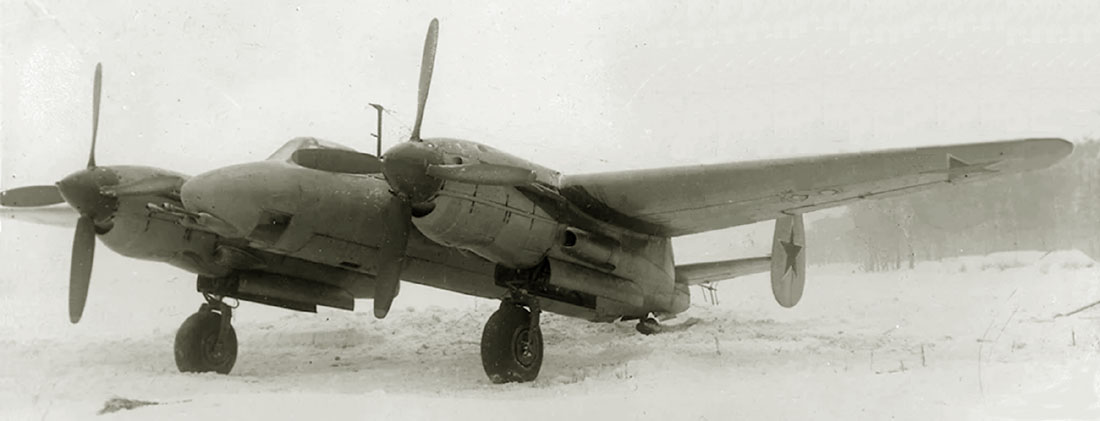
Aviation of World War II


 |
Aviation of World War II |


|
|
Soviet Union | Lend - Lease | Facts | Forum | Germany | Japan | R A F | U S A A F | Other | Photos |
|
|
Tu-1 "63P"Heavy Fighter InterceptorTupolev
In May 1944, the OKB A.N. Tupolev GKO Decision No. 5947 dated 05.22.44 entrusted the construction of a high-speed day bomber "SDB" with two engines of the AM-39 type (aircraft "63"). On the basis of the bomber version, it was also envisaged to create a night fighter-interceptor. In the version of the fighter, its forward small arms and cannon armament, consisting of two wing-mounted ShVAK-20 cannons, was enhanced by installing the following additional SPV options in the front of the bomb bay: two NR-45 cannons with 50 rounds per barrel; two NS-37 cannons with 50 rounds per barrel; two VYa-23 cannons with 50 rounds per barrel. The mass of a salvo of the front weapon was 752 kg/min for the variant with the NS-45 and 392 kg/min for the VYa-23. Protection of the rear hemisphere was to be carried out from two machine-gun mountings for UBT machine guns, caliber 12.7 mm. The upper installation had 250 rounds of ammunition, the lower one - 350 rounds. The aircraft crew defended themselves from the fire of 12.7 mm machine guns. and shells of 20 mm guns. The pilot covered himself with an armored backrest and two 15 mm thick zalokotniki. From above, the armored back passed into a transparent armor plate with a thickness of 65 mm. The upper shooter was protected by a 12 mm thick plate, the lower shooter was protected by a 12 mm thick rear armor shield and a 6 mm thick lower cladding armor. When using the aircraft as a fighter, additional front armor for the pilot was envisaged, which consisted of a front armor plate 10 mm thick, a lower armored glass 65 mm thick, a front armored glass on a lamp 65 mm thick. The aircraft's flight and navigation equipment was supposed to provide piloting day and night under any meteorological conditions. To unload the pilot from continuous monitoring of the temperature of water and oil in the engine cooling systems, electrical automatic devices were introduced to regulate the required temperature in these systems. The most important component of the new fighter-interceptor was supposed to be a radar station. By 1944, the domestic radio engineering industry had achieved certain results in the creation of airborne aircraft radars. The Gneiss-2 station was put into serial production. In total, until December 1944, 231 copies of the Gneiss-2 and Gneiss-2M radars were produced - naval, for the aviation of the Navy, the radar could be used to determine sea and air targets. The next step was the development of the Gneiss-5 onboard station. The station was intended for installation on two-seat fighters and was supposed to ensure the detection of enemy aircraft and guidance of their aircraft to them in the absence of visibility. In addition to aiming at the enemy aircraft, the station was supposed to provide the drive of its fighter to a special drive beacon from a distance of up to 90 km. According to the opinion of the GK NII VVS Gneiss-5, in terms of its tactical and technical parameters, it was not inferior to the British airborne radar of a similar purpose, surpassing it in range. In the second half of 1945, a new station, designated Gneiss-5s, was put into mass production and put into service. The Gneiss-5M variant, which was adopted by the Navy in April 1945, was specially developed and put into production for the Navy. |
|
|